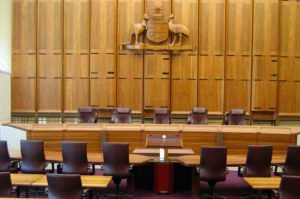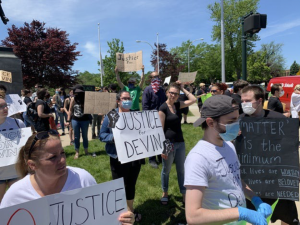African Americans helped build the iconic beach town, historian Alison Rose Jefferson details as California weighs reparations
At Shutters on the Beach, a luxury hotel in Santa Monica, guests staying in $1,500-a-night rooms can get pristine views of white-sand shores and the Pacific Ocean, hot stone massages, afternoons filled with live jazz and fresh seafood dinners.
Few visitors, however, will know that 100 years ago, the site was at the center of a painful turning point for Santa Monica’s Black community.
In 1922, Black businessmen Charles S Darden and Norman O Houston had secured an agreement to purchase the land Shutters now stands on. They were planning to develop a “first-class resort”, complete with a bathhouse, dance hall and amusement center, one they hoped would become a national tourist destination for Black Americans.
It didn’t take long for Santa Monica’s white residents to rally in opposition. The Protective League, a citizens’ group with “a membership of 1,000 Caucasians” that aimed to “eliminate all objectionable features” from the California beach town, lobbied officials to deny the men construction permits and ensure the site was zoned for residential use only. The officials complied.
Three years later, the site became a beach club for white residents.
Many people are unaware that Santa Monica, the coastal enclave now known for its beaches, star residents and hot real estate, was once home to a thriving Black community. The city was at the heart of the dreams of Black entrepreneurs, who had migrated west with their families hoping to flee prejudice and find fortune.
“Everybody saw Santa Monica as the new place of leisure in the early 20th century, and Black folks got in where they could afford to buy land,” said Dr Alison Rose Jefferson, a historian and third-generation Los Angeles resident who has long documented African American history in the Golden state.
Over time, racist policies stripped away the community’s access to the coast, forcing many families out. Today the city is predominantly white and the history of the Black experience in the city was hidden for many people.
But as California weighs an ambitious, first-in-the-nation reparations proposal for Black residents, there’s renewed attention for these forgotten histories and fresh discussions about how the government and other institutions can make amends for generations of discrimination.
“Excluding Black folks from community development impacted not only our economic resources, but also our quality of life,” said Jefferson while standing in front of the would-be Black resort plot on a surprisingly cool morning last week.
“Black folks were trying to just be, and recreation was part of that. We needed relaxation and ways to reinvigorate ourselves just like white folks. This was denying our humanity.”
Jefferson has researched the history of Santa Monica for decades, documenting the challenges and triumphs of community building by Black entrepreneurs and families along the beach. Her work will be on display in Black California Dreamin’: Claiming Space at America’s Leisure Frontier, an exhibit opening next month at the California African American Museum in LA.
A beach community rises
Our first stop on a tour through Santa Monica’s historic neighborhoods was the corner of 4th and Bay street, where the Phillips Chapel Christian Methodist Episcopal church stands on a palm tree-lined street.
“Think of dropping a pebble in a pond and seeing the waves go out. This church was the pebble and the waves were where African Americans settled,” Jefferson said.
The church was established there in 1908 and became the epicenter of Santa Monica’s Ocean Park neighborhood, at one point visited by the poet Langston Hughes.
“This land, four blocks from the beach? It’s the epitome of why people were moving to California, for this beautiful landscape and better life opportunities.”
Black Americans migrated from US southern states to Santa Monica in the late 1800s, establishing neighborhood clusters alongside white people, Chinese and Japanese communities, new Mexican immigrants, Californios (Hispanic people who’d lived in the state before it came under US control) and Jewish residents. Jefferson’s family came to LA from Montgomery, Alabama, in 1925, her grandfather one of the few Black physicians in LA.
For more Guardian journalism follow this channel
The Stouts, the Peters, the Tuckers – Jefferson rattled off names of prominent Santa Monica families who first bought homes near the church, running small farms with chickens in their yards. Locked out of many professions, Black entrepreneurs opened barber shops and salons, trucking businesses, boarding houses, mortuaries and other small enterprises, she said.
As white residents and merchants found ways to block Black residents from clubs and beach areas (in violation of unenforced civil rights laws), a Black beach began to emerge in one area near the church. The Bay Street Beach, which white residents pejoratively referred to as “the Inkwell”, along with La Bonita, a Black-owned bathhouse and lodge, were advertised in national African American travel guides, starting around the 1930s, Jefferson said.
There was a popular nightclub down the street, which thrived until 1922 when white residents petitioned the city to pass a “blanket ban on dance halls” in the area. “Black folks were just having too much fun,” Jefferson said. She cherishes a photo from that decade of two Black newlyweds smiling on the beach in front of a sign for a whites-only club: “They were staking out their territory, saying this is our place and we’re having a good time, even if they were being excluded from that zone.”
Some efforts at exclusion and displacement, however, were too great to overcome.
Houses burned down
In the 1950s, governments across the US began decimating Black neighborhoods through “eminent domain”, seizing private land for public projects. The construction of freeways and other public facilities and infrastructure tore through Black historical enclaves in cities such as Miami, Nashville, Montgomery, New Orleans, Kansas City and Oakland.
In Santa Monica, the Interstate 10 freeway displaced an estimated 600 predominantly Black families. One house destroyed had belonged to Nick Gabaldón, the first documented Black and Mexican American surfer in Santa Monica, and “a symbol for all African Americans striving for self-fulfillment and to take advantage of everything the California Dream had to offer”, Jefferson said. Families were dispersed to areas they could afford – far from the beach.
In 1957, three decades after Darden and Houston’s resort proposal was blocked, entrepreneur Silas White had his own plans for a beach club. The Ebony Beach Club would be a membership-based recreation and entertainment venue in a long-vacant building, down the street from the historic church. The project had the support of Nat King Cole, but two months before it was set to open, the city voted to seize the land to build a parking lot for a new “civic auditorium”, a project that ultimately razed the Black neighborhood known as Belmar Triangle. In some instances, the city burned down homes considered “blighted” and then publicized photos of the torched structures to further justify the taking of land in the area, Jefferson said.
“Everybody was furious. It certainly hurt,” said Cristyne Lawson, 88, who grew up in the neighborhood and was close with White’s family. “Imagine a Black beach house in Santa Monica. No, they weren’t going to let that happen.”
Before his land was taken, White put up a large banner that accused the city of using eminent domain “for racial discrimination”. His supporters protested at city hall.
There were other battles over civil rights. In 1920, a lawsuit challenged off-duty sheriffs who shot a Black man accused of stepping on private property at the beach. One resident refused to move out of the white section of a movie theater in the 1940s, launching a legal battle that desegregated cinemas. A major Sears store faced large protests over hiring discrimination in 1947.
Lawson, who today lives a block away from her childhood home, said she has mostly fond memories of her upbringing in the 40s and 50s. Her mother was a musician and father the city’s second Black councilman in the 70s: “There were all kinds of people who lived here … it was the only area where Black people had access to a beach from where they lived.” She remembers dance instructors refusing to teach her ballet as a child, but she ended up studying with a Black ballerina and became a renowned dancer and college dean.
She said she’d love to see thriving establishments for Black residents in Santa Monica today, but is not sure that’ll ever happen: “We were like a little country town when I grew up here. Now, it’s become one of the most expensive places to live.”
‘We’re our own changemakers’
In June, California released its 1,080-page reparations report outlining more than a century of discrimination against Black Californians since enslavement, including through housing segregation, environmental racism, an unjust legal system and mental and physical harm and neglect.
The commission that drew up the report also put forward recommendations as to how descendants of enslaved people and free Black residents in the US before 1900 could be compensated for past harms. The state legislature will now consider the proposal.
Meanwhile, there have been some small-scale attempts to start to compensate families. Last year, LA county returned beachfront land just south of Santa Monica to descendants of a Black family who had valuable property seized by eminent domain in the 1920s. In 2021, the city of Santa Monica also launched a “right to return” affordable housing program for families displaced by the 1950s freeway, but reports in April suggest only 11 applicants were deemed eligible.
Jefferson points out that the displaced families were homeowners: “So why can’t they be owners now? Why can’t they be helped to buy homes?”
Reparations, Jefferson says, should involve broader efforts to make Santa Monica affordable and beaches more accessible. The process starts with documenting the history, which Jefferson has done in her book on Black leisure sites in California’s Jim Crow era, a Santa Monica essay and with commemorative signs and a public art project in the Belmar neighborhood.
Walking past her panels showing joyful archival photos of African American families in the early 1900s, she says, “Hopefully this helps Black folks realize the contribution we made … that although we have been victimized and discriminated against, we’ve also been our own changemakers. And hopefully it helps white folks realize they weren’t the only ones here.”




